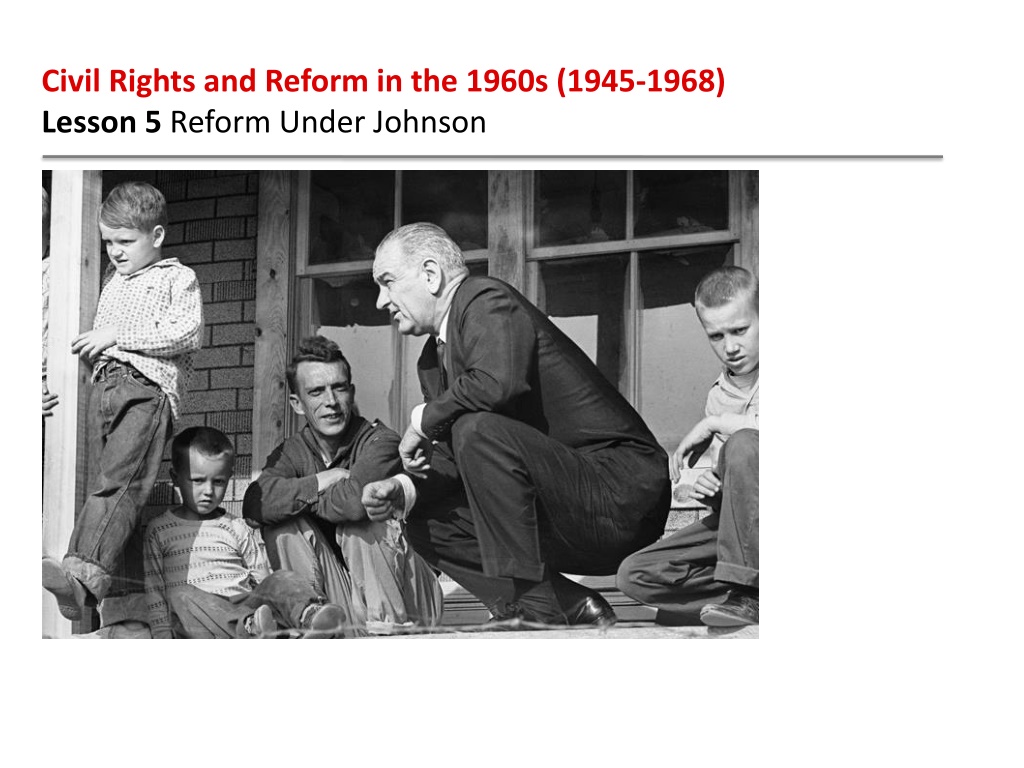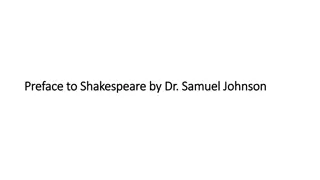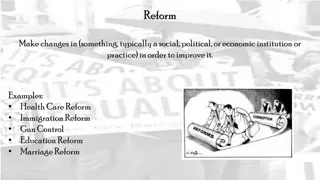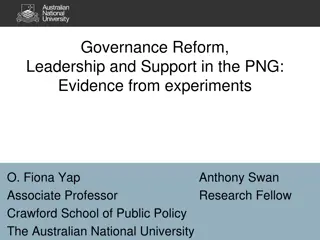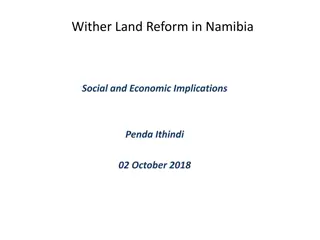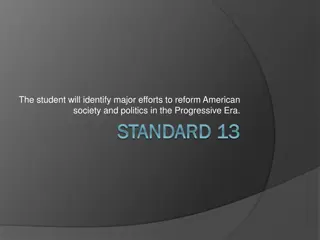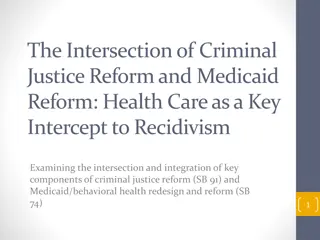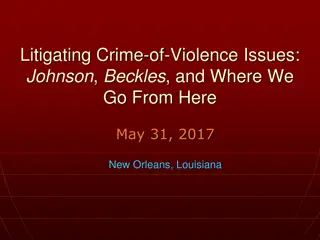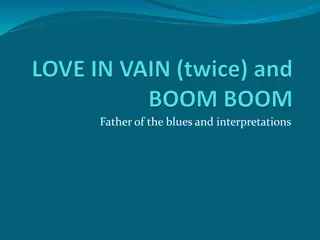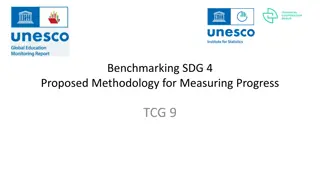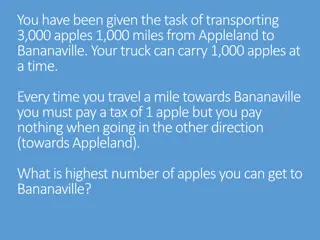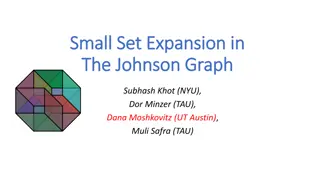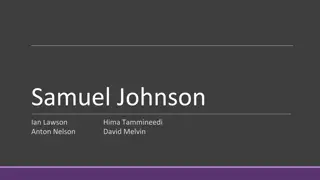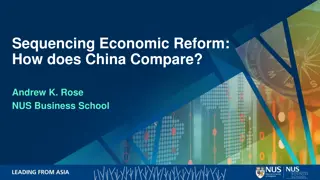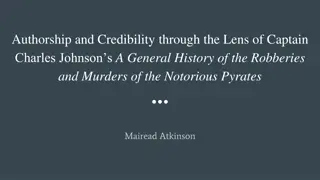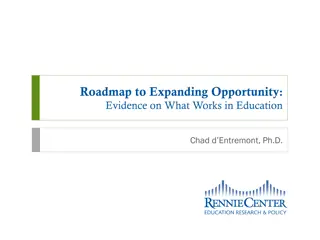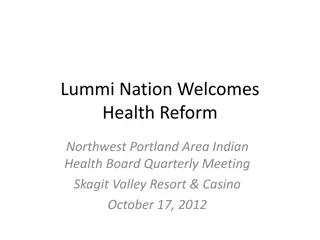Reform and Progress Under Johnson's Great Society Programs
During the 1960s, President Lyndon B. Johnson implemented the Great Society programs to address civil rights, poverty, and economic opportunities in the United States. This initiative aimed to improve the quality of life for all Americans through significant domestic legislation and expanding opportunities for minorities and working-class citizens. Johnson's policies, including the Civil Rights Act, War on Poverty, and other key initiatives, brought about significant reforms and advancements, shaping the socio-economic landscape of the era.
Download Presentation

Please find below an Image/Link to download the presentation.
The content on the website is provided AS IS for your information and personal use only. It may not be sold, licensed, or shared on other websites without obtaining consent from the author. Download presentation by click this link. If you encounter any issues during the download, it is possible that the publisher has removed the file from their server.
E N D
Presentation Transcript
Civil Rights and Reform in the 1960s (1945-1968) Lesson 5 Reform Under Johnson
Civil Rights and Reform in the 1960s (1945-1968) Lesson 5 Reform Under Johnson Learning Objectives Evaluate Johnson's policies up to his victory in the 1964 presidential election. Analyze Johnson's goals and actions as seen in his Great Society programs. Assess the achievements of the Great Society in creating economic opportunities for citizens. Analyze the effects of U.S. Supreme Court decisions.
Civil Rights and Reform in the 1960s (1945-1968) Lesson 5 Reform Under Johnson Key Terms Civil Rights Act War on Poverty Economic Opportunity Act Barry Goldwater Great Society Medicare Medicaid Immigration and Nationality Act of 1965 Warren Court Tinker v. Des Moines School District judicial interpretation
Johnsons Path to the Presidency Lyndon B. Johnson, who became President after Kennedy s assassination, shared the same goals as his predecessor. These goals shaped the purpose of Johnson s Great Society program. A seasoned politician, Johnson successfully pushed through significant domestic legislation that he hoped would become the first step to achieving the quality of life he thought all Americans should enjoy.
Johnsons Path to the Presidency An Influential Legislator Continuing Kennedy's Civil Rights Policies The Fight to Expand Economic Opportunity Johnson Defeats a Conservative Challenger
Johnsons Path to the Presidency President Lyndon B. Johnson, a lifelong advocate for minority and working-class citizens, visits a job training center in Marcos, Texas.
Johnsons Path to the Presidency Analyze Information Use information from the chart to evaluate the effects of the Great Society on U.S. poverty levels over time. Do you think the programs were a success? Why or why not?
Creating the Great Society In the spring of 1964, in a speech at the University of Michigan, Johnson outlined his vision for America, calling it the Great Society. He said that during the past hundred years, Americans had spread across the continent, developed industrially, and created great wealth. But the work of America was not complete. He added,
Creating the Great Society Increasing Access to Healthcare Investing in Public Education Environmental and Consumer Protection Less Restrictive Immigration Policies The Legacy of the Great Society
Creating the Great Society President Johnson talks with an impoverished man about the challenges facing his Kentucky community.
Creating the Great Society Analyze Charts Based on the data in the pie charts, which ethnic group is projected to grow the most by 2050?
The Impact of the Warren Court During the 1960s, the Supreme Court demonstrated a willingness to take the lead on controversial social, religious, and political issues. Led by Chief Justice Earl Warren, the Supreme Court at this time often called the Warren Court became the most liberal in American history. Its decisions supported civil rights, civil liberties, voting rights, and personal privacy.
The Impact of the Warren Court A Principle of Voting Rights Redefining Civil Rights and Liberties Church and State in the Public Sphere
The Impact of the Warren Court The Warren Court issued many landmark rulings in the areas of civil rights, criminal justice, the First Amendment, and legislative districting.
Quiz: Johnsons Path to the Presidency How was Lyndon B. Johnson's 'War on Poverty' supposed to assist the poor? A. by providing training for the unemployed B. by increasing unemployment funding to the states C. by mandating an increase in the federal minimum wage D. by expanding opportunities for college scholarships
Quiz: Creating the Great Society What impact did the Immigration and Nationality Act of 1965 have on American society? A. It dramatically decreased immigration rates into the United States. B. It established an immigration quota that favored Western Europeans. C. It allowed more immigrants from Asia and the Americas. D. It made it easier for immigrants to establish citizenship.
Quiz: The Impact of the Warren Court How did the Warren Court's ruling in Gideon v. Wainwright guarantee fair legal treatment for the poor? A. It guaranteed the equal representation of different economic backgrounds on juries. B. It provided the poor access to a lawyer after investigators questioned them. C. It prevented prosecutors from using self-incriminating statements in state and federal trials. D. It required states to grant the poor access to a lawyer if one was unaffordable.
